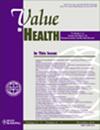Traditional Methods Hold Their Ground Against Machine Learning in Predicting Potentially Inappropriate Medication Use in Older Adults
IF 4.9
2区 医学
Q1 ECONOMICS
引用次数: 0
Abstract
Objectives
Machine learning methods have gained much attention in health sciences for predicting various health outcomes but are scarcely used in pharmacoepidemiology. The ability to identify predictors of suboptimal medication use is essential for conducting interventions aimed at improving medication outcomes. It remains uncertain whether machine learning methods could enhance the identification of potentially inappropriate medication use among older adults compared with traditional methods. This study aimed to (1) to compare the performances of machine learning models in predicting use of potentially inappropriate medications and (2) to quantify and compare the relative importance of predictors in a population of community-dwelling older adults (>65 years) in the province of Québec, Canada.
Methods
We used the Québec Integrated Chronic Disease Surveillance System and selected a cohort of 1 105 295 older adults of whom 533 719 were potentially inappropriate medication users. Potentially inappropriate medications were defined according to the Beers list. We compared performances between 5 popular machine learning models (gradient boosting machines, logistic regression, naive Bayes, neural networks, and random forests) based on receiver operating characteristic curves and other performance criteria, using a set of sociodemographic and medical predictors.
Results
No model clearly outperformed the others. All models except neural networks were in agreement regarding the top predictors (sex and anxiety-depressive disorders and schizophrenia) and the bottom predictors (rurality and social and material deprivation indices).
Conclusions
Including other types of predictors (eg, unstructured data) may be more useful for increasing performance in prediction of potentially inappropriate medication use.
在预测老年人可能的用药不当方面,传统方法与机器学习相比仍有优势。
目的:在健康科学领域,机器学习方法在预测各种健康结果方面备受关注,但在药物流行病学领域却鲜有应用。识别次优用药预测因素的能力对于开展旨在改善用药效果的干预措施至关重要。与传统方法相比,机器学习方法能否提高识别老年人潜在用药不当的能力仍不确定。本研究的目的是:1)比较机器学习模型在预测潜在用药不当方面的性能;2)量化和比较加拿大魁北克省社区老年人(65 岁以上)群体中预测因素的相对重要性:我们使用了魁北克慢性病综合监测系统,选择了 1,105,295 名老年人作为研究对象,其中 533,719 人可能使用了不适当的药物。潜在的不恰当用药是根据 Beers 清单定义的。我们根据 ROC 曲线和其他性能标准,使用一组社会人口学和医学预测因子,比较了五种流行的机器学习模型(梯度提升机、逻辑回归、天真贝叶斯、神经网络和随机森林)的性能:结果:没有一个模型明显优于其他模型。除神经网络外,所有模型在首要预测因子(性别、焦虑抑郁障碍和精神分裂症)和次要预测因子(农村、社会和物质匮乏指数)方面的表现一致:结论:纳入其他类型的预测因子(如非结构化数据)可能更有助于提高潜在不当用药的预测效果。
本文章由计算机程序翻译,如有差异,请以英文原文为准。
求助全文
约1分钟内获得全文
求助全文
来源期刊

Value in Health
医学-卫生保健
CiteScore
6.90
自引率
6.70%
发文量
3064
审稿时长
3-8 weeks
期刊介绍:
Value in Health contains original research articles for pharmacoeconomics, health economics, and outcomes research (clinical, economic, and patient-reported outcomes/preference-based research), as well as conceptual and health policy articles that provide valuable information for health care decision-makers as well as the research community. As the official journal of ISPOR, Value in Health provides a forum for researchers, as well as health care decision-makers to translate outcomes research into health care decisions.
 求助内容:
求助内容: 应助结果提醒方式:
应助结果提醒方式:


